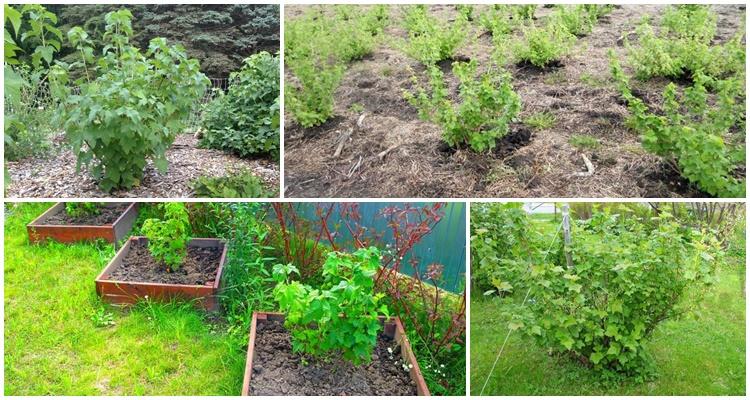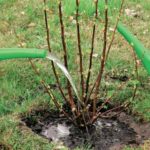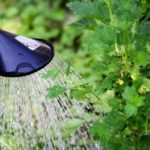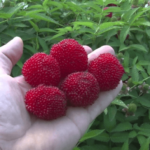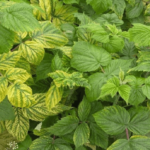Despite the fact that the Skromnitsa raspberry variety has been around for 30 years, it is still in great demand among gardeners and summer residents. This juicy berry has excellent technical and taste characteristics, good yield, resistance to external conditions, excellent frost resistance and resistance to diseases and pests. Skromnitsa is considered one of the best varieties of medium ripening.
Description and characteristics of the Skromnitsa variety
This raspberry variety was bred back in 1982 by breeder I.V. Kazakov, entered into the State Register in 1990, and since then has won the love and devotion of hundreds of thousands of people throughout the Russian Federation and beyond.
This is a non-remontant shrub, reaching a height of up to 2 meters, slightly spreading. The shoots produce many branches, an average number of shoots, and almost no thorns. The berries are from 2 to 4 grams, spherical or slightly conical, bright, with medium-density pulp. The taste is sweet, minimal sourness. The fruits are formed in clusters. Skromnitsa is a mid-season variety.
Main advantages and disadvantages
The Skromnitsa variety has almost no disadvantages. These include only a tendency to be affected by gray rot and susceptibility to spider mite attacks.
Cultivation
To get full raspberry harvests, you must strictly follow the rules of planting, soil selection, light levels, humidity, and so on.
When and where to plant?
The Skromnitsa variety is planted in sunny areas protected from strong winds. The soil must be permeable, nutritious, loose, because the bushes grow in one place for up to 10-15 years.
Planting time depends on the area and climate. In the southern regions they plant from mid-April; in the central and northern regions this cannot be done before mid-May.In autumn, planting begins after leaf fall.
Preparation of planting material
Strong seedlings with developed roots are selected for planting. Raspberries need to be planted to the level of the root collar, as deepening will lead to rotting and death of the plant. Planted Skromnitsa raspberries are cut at a height of 30-40 centimeters from the soil level.
Landing technology
Raspberries grow quickly, so it is necessary to maintain a distance between the bushes. The planting pattern is 40-50 centimeters between seedlings and 1.5-2 meters between rows. Use holes or trenches 40 centimeters deep.
How to care for a plant
Despite its unpretentiousness, the Shy raspberry needs care. After planting, it is necessary to provide optimal conditions for adaptation to the new location.
Watering and fertilizers
Shy plant is drought-resistant, but this does not mean that it will bear fruit abundantly without sufficient moisture. It can survive short-term drought, but the bushes need regular watering to grow and produce a crop. At the same time, there is no need to overwater the raspberries; the soil just needs to be moist.
Plants will remain in one place for at least ten years, greatly depleting the soil. In order for the bushes to continue to bear fruit regularly, they need to be fed. In the spring, nitrogen and potassium fertilizers are applied, preferably ammonium nitrate or urea. This is done until the berries are set. When they begin to fill, superphosphate is added.
Raspberries do not tolerate the presence of chlorine in fertilizers, so such substances are not used to feed Shyness.
Mulching
To maintain soil looseness and moisture, mulching is carried out.A layer of mulch helps maintain a stable temperature at the root system of the plant, preventing it from overheating or freezing. Also, mulch gradually decomposes, as it consists of organic matter.
Nutrients gradually enrich the soil under the plantation, making it suitable for growing berry crops in one place for decades.
The following substances are suitable for the role of mulch:
- Humus or rotted compost.
- Crushed pine bark.
- Weathered peat.
- Fallen dry leaves.
For mulching, materials that are not contaminated with pathogens that can infect raspberries should be used.
Trimming
The modest one is pruned in the fall, after harvest, in preparation for the coming winter. Fruiting shoots are cut out at ground level. In the spring, sanitary pruning is performed. At this time, diseased, broken and frozen shoots are cut out. Shorten to a healthy kidney. The tops are cut off by 10-15 centimeters - this stimulates the formation of the crop. In spring, work is carried out before sap flow begins.
Diseases and pests
The modest woman has enviable health. It is immune to such dangerous diseases as anthracnose, as well as to most fungal infections. This makes it in demand among amateur gardeners and summer residents, for whom disease control is difficult. However, raspberries are susceptible to gray rot, which often appears due to waterlogging or excessive depth during planting.
One of the most dangerous pests for raspberries of this variety is the spider mite, which develops in dry conditions, so mulching is so important for berry bushes, which makes it possible not only to obtain a healthy harvest, but also to indirectly combat the pest.
Cleaning and storage
Shy berries can be harvested when fully ripe. They can withstand transportation without problems; they can go without a refrigerator for 2-3 days (depending on the ambient temperature). They can be stored in the refrigerator for a week without harm.
They tolerate freezing well, maintaining their excellent taste, shape and beneficial properties.




